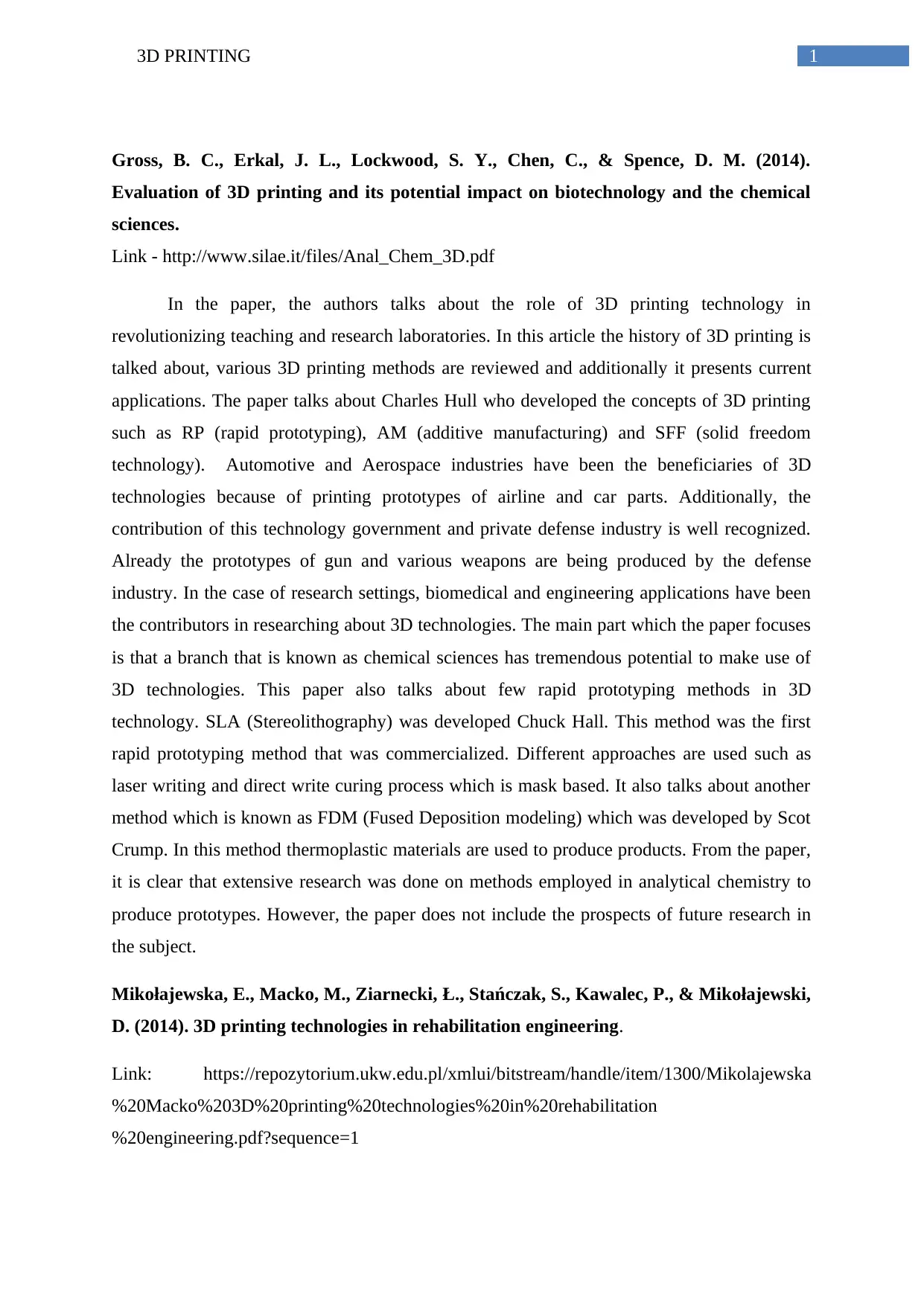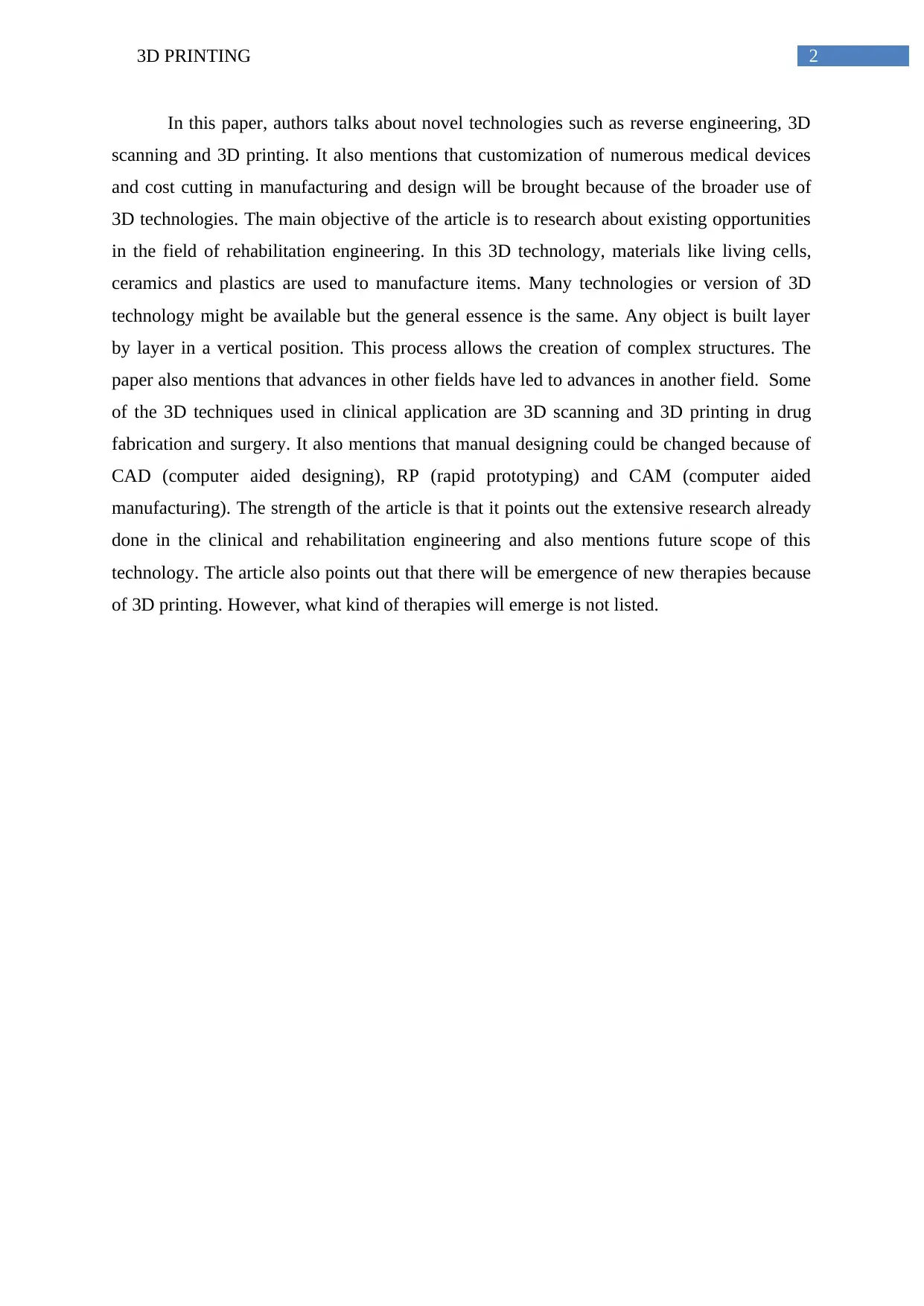University Name: 3D Printing Technologies and Applications Report
VerifiedAdded on 2021/05/31
|4
|766
|110
Report
AI Summary
This report analyzes the impact of 3D printing across various sectors, including automotive, aerospace, biomedical, and rehabilitation engineering. It reviews two key papers: one discussing the role of 3D printing in revolutionizing teaching and research, particularly in biotechnology and chemical sciences, and the other focusing on its applications in rehabilitation engineering, highlighting the use of 3D scanning and printing in medical device customization and drug fabrication. The report examines different 3D printing methods like SLA and FDM and discusses their contributions to rapid prototyping. It emphasizes the potential of 3D technologies for innovation and cost reduction, while also acknowledging the need for further research in emerging therapies and future applications. The report is a comprehensive overview of the current state and future possibilities of 3D printing technologies.
1 out of 4










![[object Object]](/_next/static/media/star-bottom.7253800d.svg)